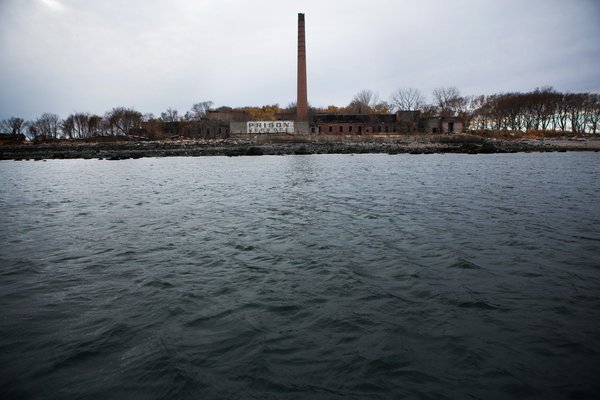Mark Waid's 'Potter's Field' (and mysterious NYC burial sites)
When I saw The Beat's news item on Mark Waid returning to BOOM! Studios in order to produce more work, I thought I might dig up a post I wrote about his Potter's Field, a 2011 mini-series for the comics and graphic novel publisher. For an evocative piece of local reporting that appeared in the New York Times in mid-November, 2013, the newspaper’s Corey Kilgannon visited Potter’s Field, on the west side of Long Island Sound. It's an area of land not often seen by a reporter, as it's a tightly restricted, city-designated plot for the burial of unclaimed bodies.

“Here on a grassy expanse toward the south end of Hart Island, off the Bronx, the trenches are 10 feet deep and as long as a football field,” writes Kilgannon. “They fill up steadily with the dead — the homeless, poor, stillborn and other unclaimed bodies — delivered by truck and ferry from all over New York City, for unceremonious interment.”
New York City’s Corrections Department oversees the methodical processing and burials on Potter’s Field, and they keep strict regulations on visits, reports Kilgannon. Outside of the inmates from Riker’s Island that do the digging, trips to the island were for years only allowed under specific conditions determined by city officials at the department. “Originally, ferry service was by appointment only, and exclusively for relatives possessing a death certificate of a loved one,” Kilgannon explains.

I first read about Potter’s Field in a creator-owned comic mini-series a couple of years ago. Named after the (somewhat) famously closed-off burial site, writer Mark Waid (Thrillbent co-founder, Daredevil, Captain America, lots more) penned a story that was drawn by co-creator Paul Azaceta, whose Outcast with Robert Kirkman debuted in June.
Laid-out in somber indigo-blues, hunter greens, and more, with colorist Nick Filardi (who worked on the similarly hued Batman: Streets of Gotham not long after this project) filling-out the panels with loads of shadows, the script for Potter’s Field draws on police procedural-driven stuff, suspense, and horror. Waid’s “John Doe” here is fittingly a man who toils under the guise of anonymity to work cases that go cold, yielding bodies that end up on Hart Island. His aim is to put faces to the numbered graves in Potter’s Field, and against Azaceta’s casting of drab midtown bars, roaring elevated subway trains and more, Doe’s work obviously leads him to gang bosses, kidnappers, and in general, no-good folks. “And he never rests until he can give the dead the only thing he can,” a character explains of Doe’s calling. "…A name to be remembered by."

All of the murkiness in Waid’s exclusively nighttime-based book — the unsolved deaths, the ultra mysterious, closed-to-everyone cemetery that looms in the background — helpfully clouds what’s a classic detective story at the core. Comics creator Greg Rucka articulates the perplexity of Potter’s Field in the book’s introduction, citing a “palpable layer of darkness that permeates every surface.” I like writer Christopher Maag's discussion of the infinitely curious region of the Bronx in his 2012 piece for longform storytelling-centric site Narratively. It's as if he explains exactly what drew Mark Waid to his subject:
"From an airplane at night, Hart Island is invisible from the west. It can be seen only on clear nights, only from the east and by inference, when lights from the city bounce off the water of the Sound and leave the island backlit. It appears as negative space, the darkest ink spot on a page of black."

See The Hart Island Project for more background on Potter’s Field. Boom! Studios collected Potter’s Field in 2011. Image © 2013 Victor J. Blue for The New York Times. Images © 2011 Paul Azaceta. This post originally appeared at my Tumblr.